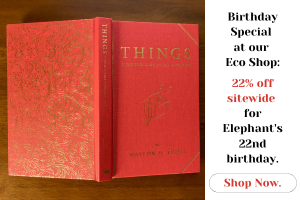“Defensive behavior is a barrier to communication.” ~ Gary Chapman
Misunderstanding, miscommunication, and conflict are inevitable in a relationship.
While they cause a lot of stress and agony for the ones in a relationship, they can also be a vital source for bridging the gap, coming closer to the other person, and stepping into their world.
We cannot build effective, empathetic, and compassionate connections with people if we don’t make an attempt to step out of our world and step into theirs.
All relationships thrive on connection. A connection is a bond—an energy—that exists between two people that is built and strengthened through conversations and moments when they feel seen, heard, and validated for who they are and the lens from which they view the world (irrespective of the color of that lens).
It is sustained by the intent to listen and accept what they have to offer without judgement, criticism, and blame and to be able to give support, understanding, and respect for the same without the need to dissect each and every word apart.
Thus, responsiveness is the key to connection. Only when we are open, available, and responsive to the needs, perspectives, and emotions of others—without the need to debate how right and wrong they are all the time—do we open doors for a strong and intimate connection.
It is about stepping into, sitting with, and holding space for the other in their own world—where they live, breathe, and experience life. Only when both (or more) individuals are able to do that for each other do they create a strong connection.
However, most often, when people get stuck in a cycle of miscommunication and misunderstanding, the following things happen:
1. They end up debating or discussing the sequence of events—who said what, what happened, and what didn’t happen, i.e. looking at the logical, practical aspects of a situation.
2. They end up clashing over how they’re feeling, i.e. the emotional aspects of a situation.
While both perspectives are necessary and need to be considered, a discussion eventually turns into a conflict, which then escalates when we don’t understand or make an attempt to understand what we and the person would “respond” better to.
Thus, the chances of one or both people feeling threatened in that situation increases exponentially.
What happens when we feel threatened or attacked?
We defend. In order to protect ourselves from either a perceived or an actual attack, we either fight back, deflect, or do nothing.
And when we have been in a defense mode for too long, we become unable to spot the difference between “real” and “perceived”—that’s where most relationships begin to crumble.
When we fight back, we usually become critical of our partners or loved ones and blame them for whatever may have happened. We refuse to believe that we may have contributed to the situation in some way and find ways to put the other person on the spot. It’s usually a “it’s not me, it’s all because of you” kind of a conversation that ends up taking place. And well, when we attack the other person, they will also defend themselves. Thus, the conflict continues.
When we avoid or escape by using statements like “let’s not talk about this right now,” or “do we have to talk about it?” we may dodge the bullet in that moment. But it will surely find its way back to us.
And when we do nothing, nothing changes.
In extremely intimate and important relationships, it becomes imperative to consider that both people have their own versions of reality because they view the same situation differently. To be able to acknowledge, accommodate, and embrace this difference is crucial to the health of the relationship. Perhaps, this is also the biggest gap that needs to be bridged.
While similarities with another help us to form a connection, embracing the differences strengthens it.
And that’s the challenge.
“We build too many walls but not enough bridges.” ~ Anonymous
Therefore, it’s important to:
1. Be open and receptive to the other person’s worldview, even if you don’t agree. If they mean something to you, then a little acknowledgement goes a long way.
2. Acknowledge and validate their emotions, even if you think the place they come from is unreasonable. Remember, in your world, they may be. In theirs, it’s real.
3. Have a grounded, centered conversation instead of trying to resolve everything when emotions are at their peak.
4. Take responsibility for your part instead of getting them to agree with your perspective. In a centered conversation that is coming from an intent to hold space for the other, acknowledgement and understanding will flow naturally.
5. Focus on the problem and not on the person. We often end up attacking the person instead of the problem or the source of the conflict.
But before we can do any of that for someone else, we need to be able to do that for ourselves.
If we find ourselves getting defensive in conversations or feeling an innate need to protect ourselves from people, then it is our need for safety that is getting triggered.
We then need to go deep within and ask ourselves, where is this need coming from?
What do I feel most unsafe about?
What is it that I need to protect myself from?
Once we have made peace with our world, it’s only then that we can find the safety and courage to step into someone else’s world and offer them the same.
“All relationships have the same basic components—people, wants, and expectations.” ~ Iyanla Vanzant
~








Read 38 comments and reply